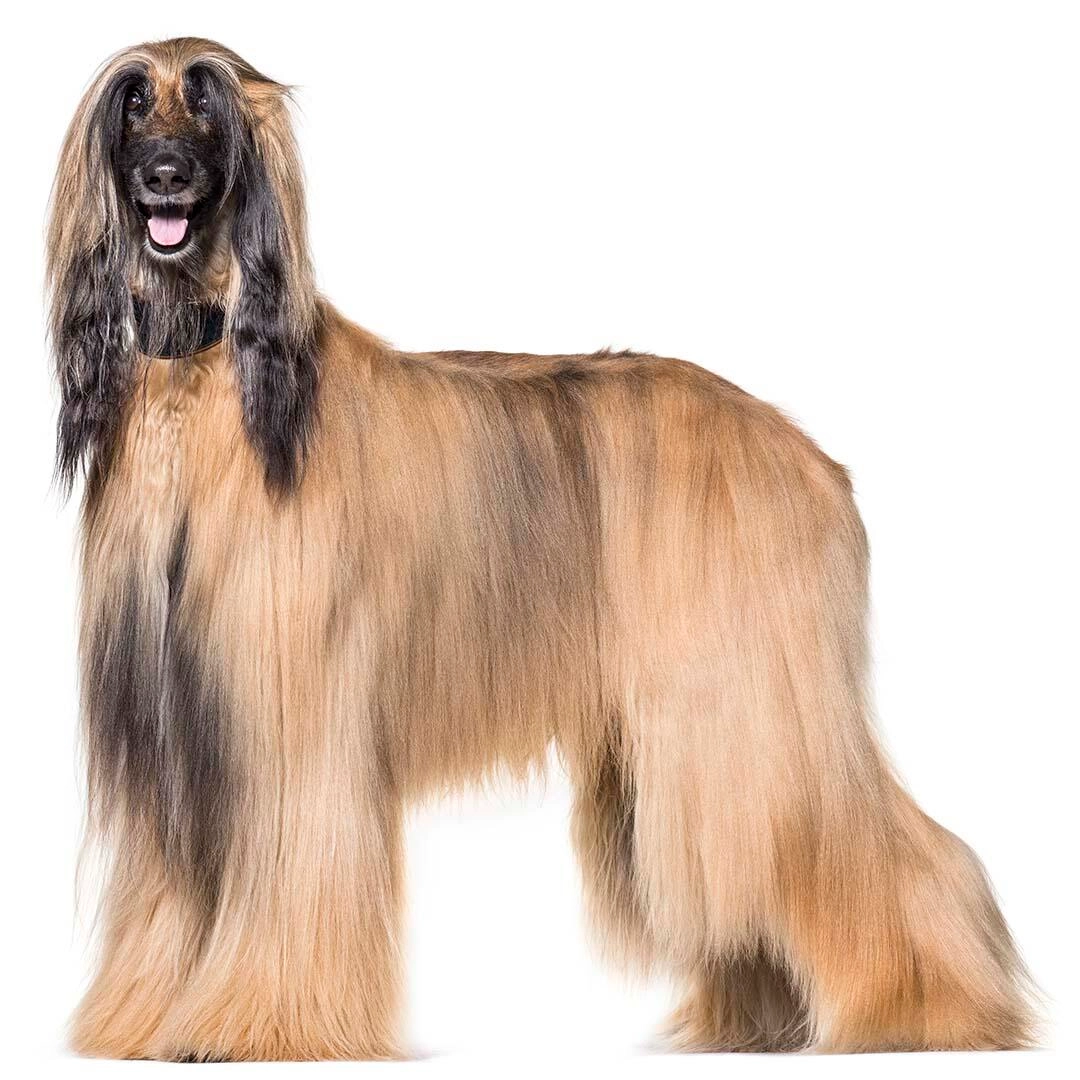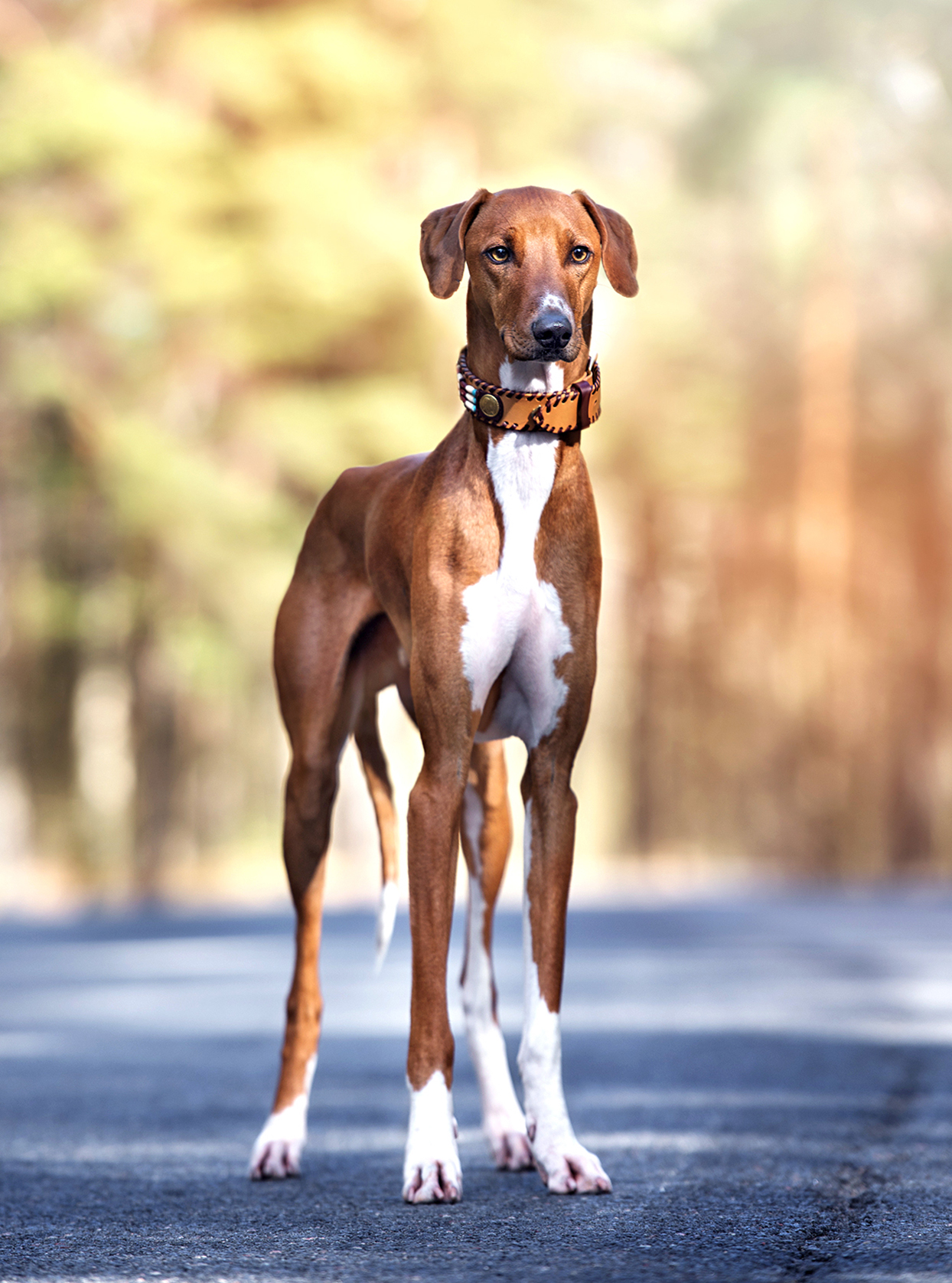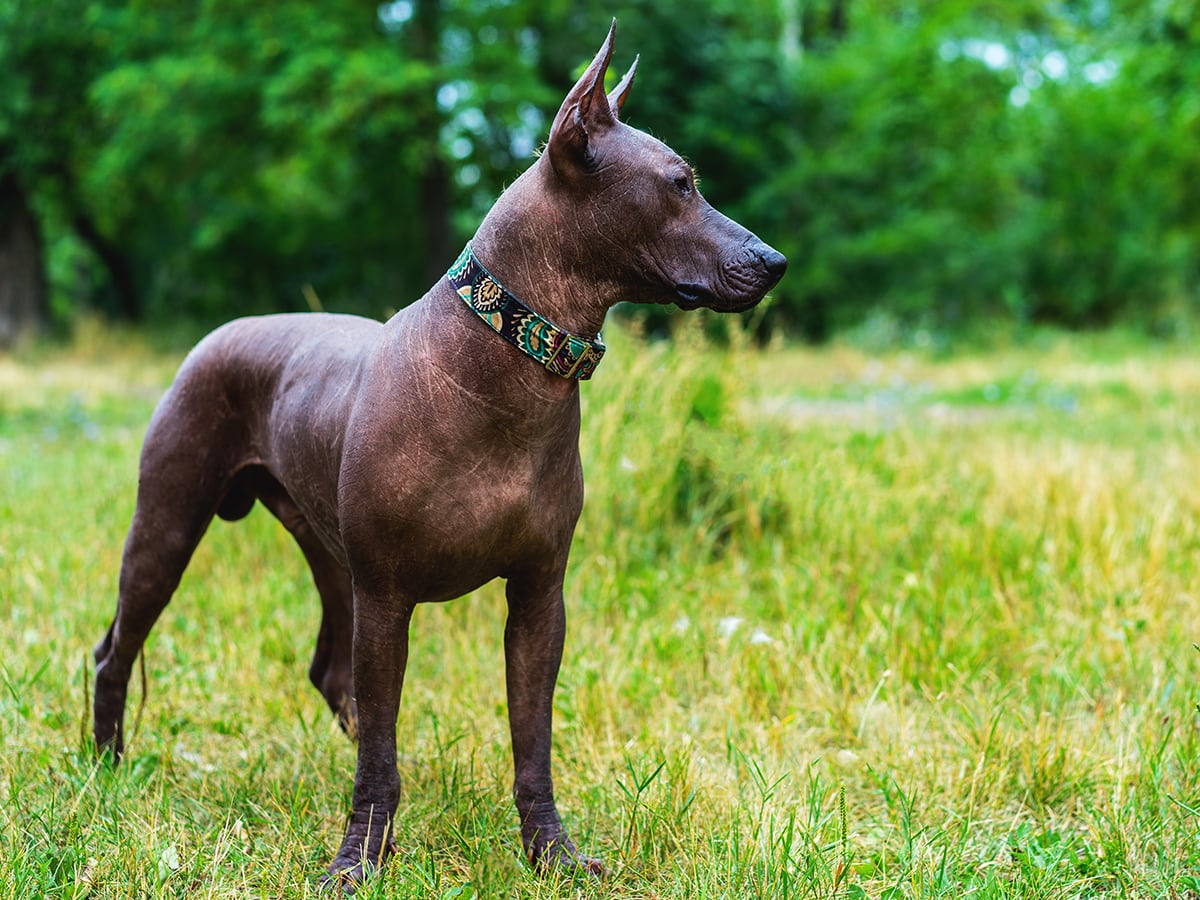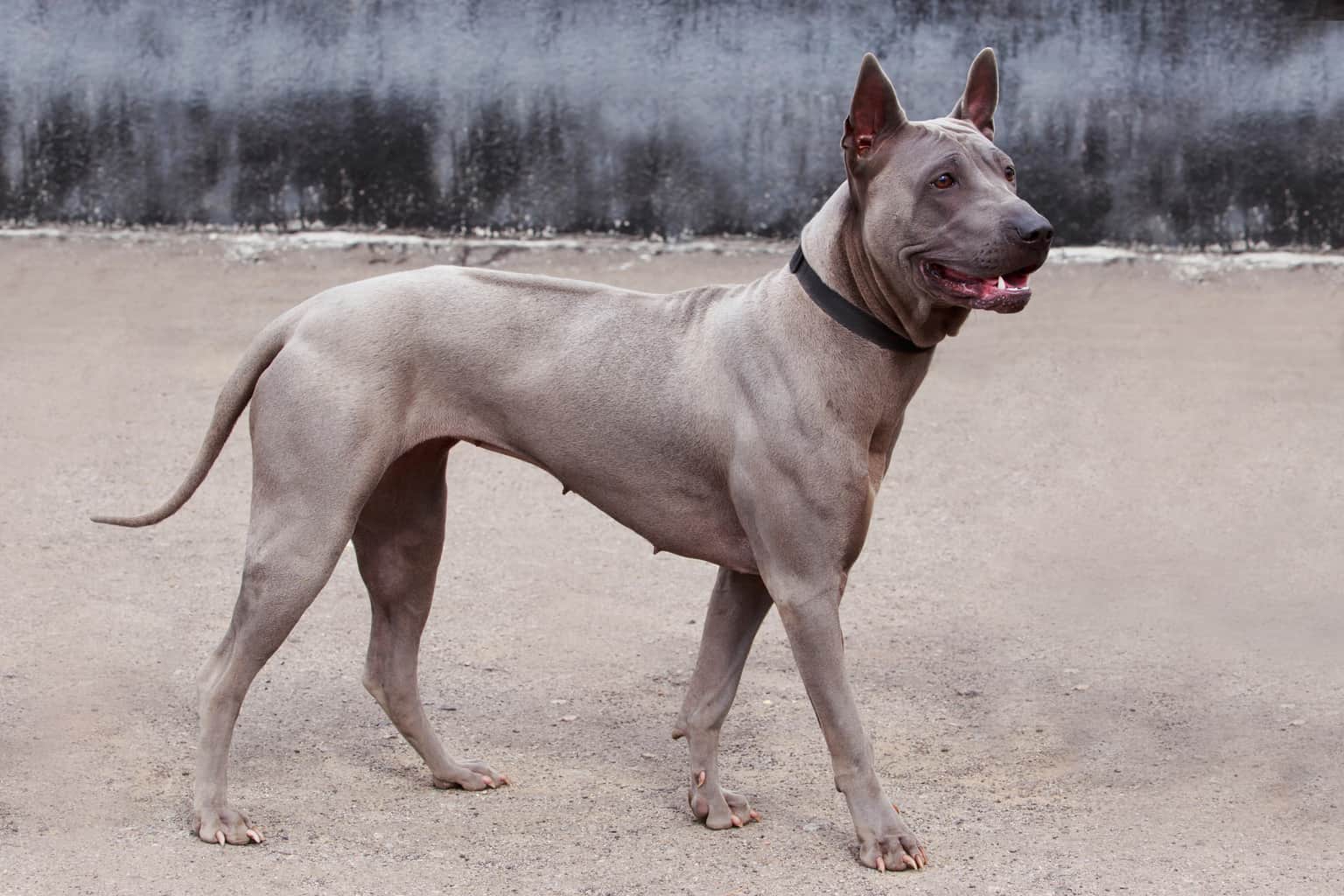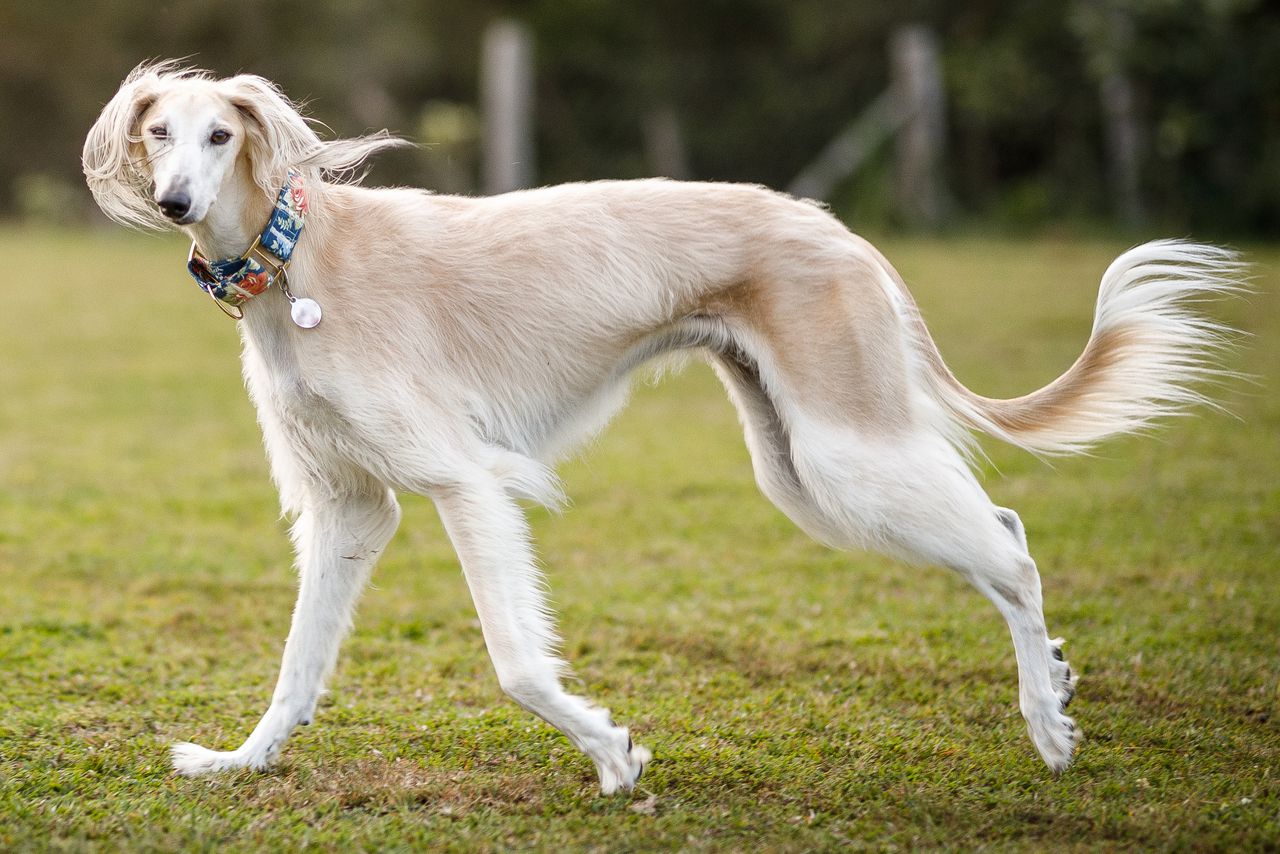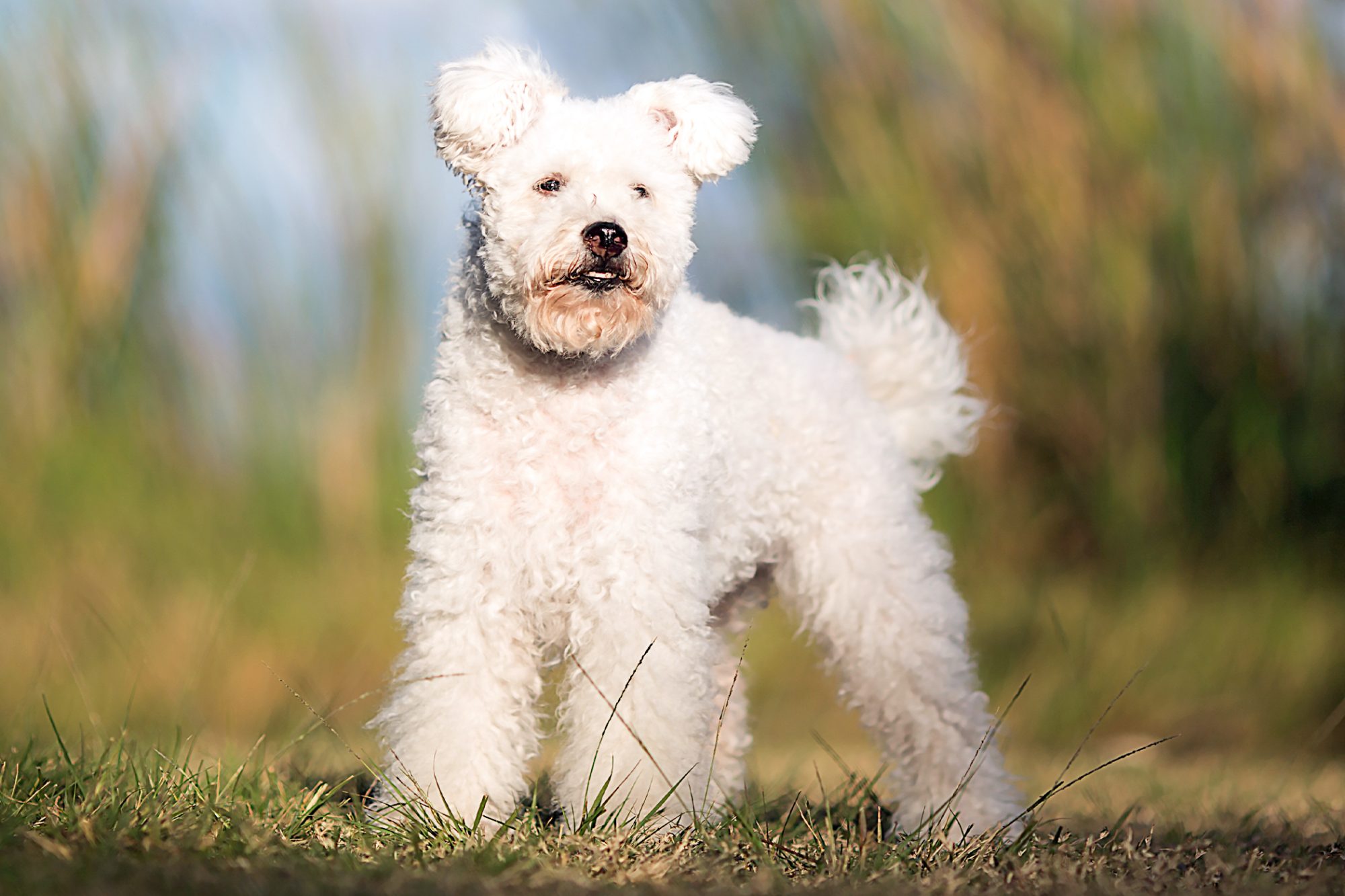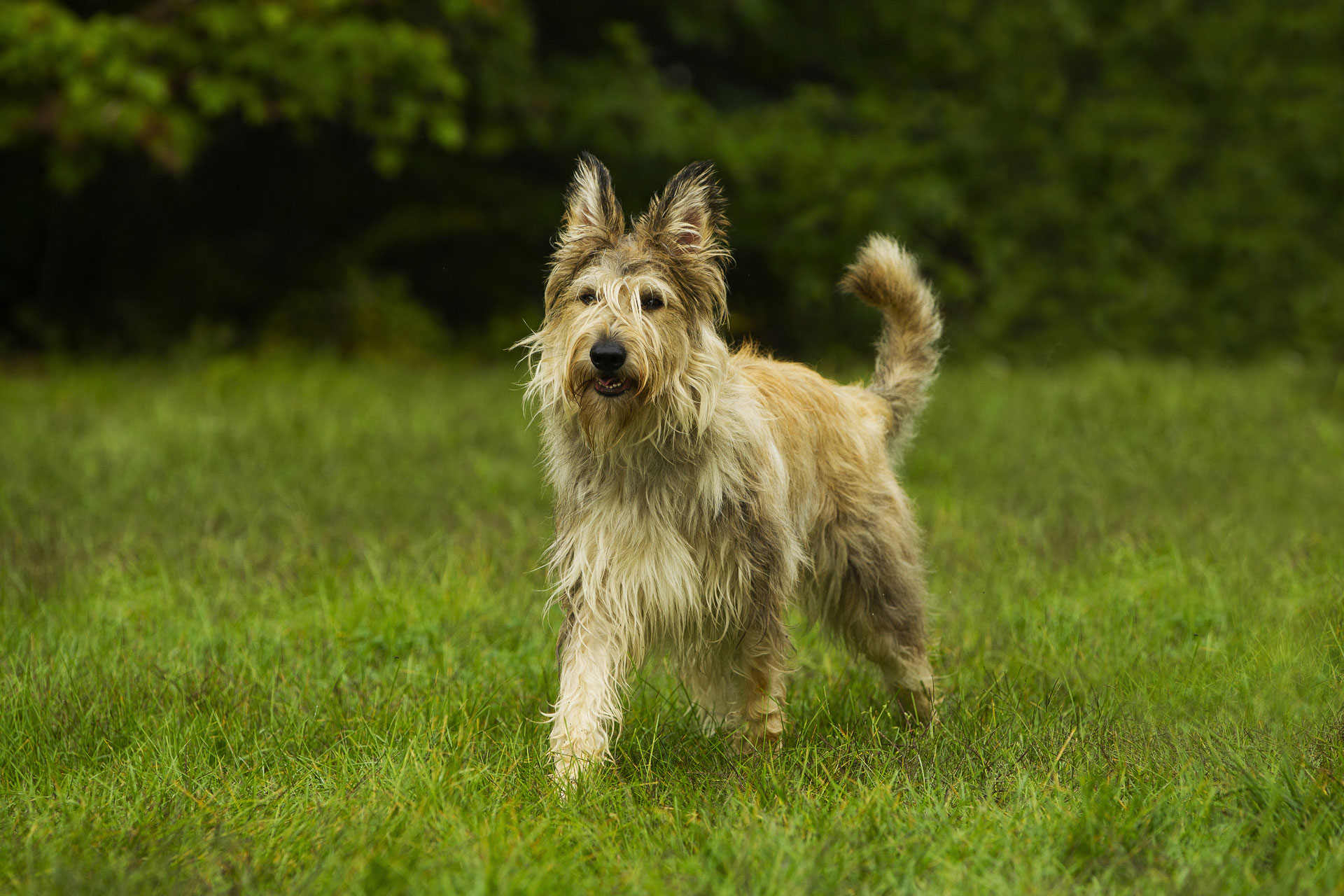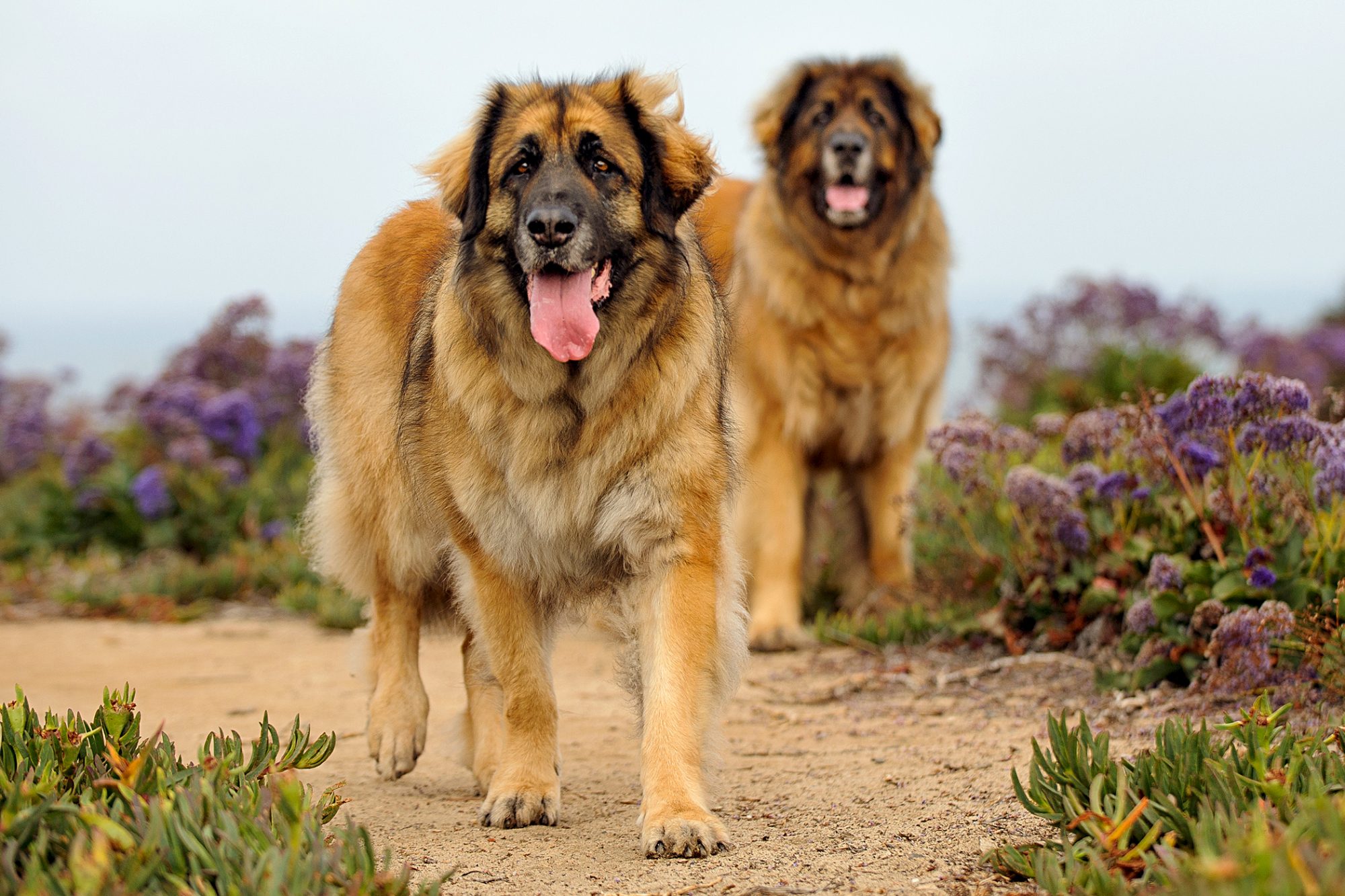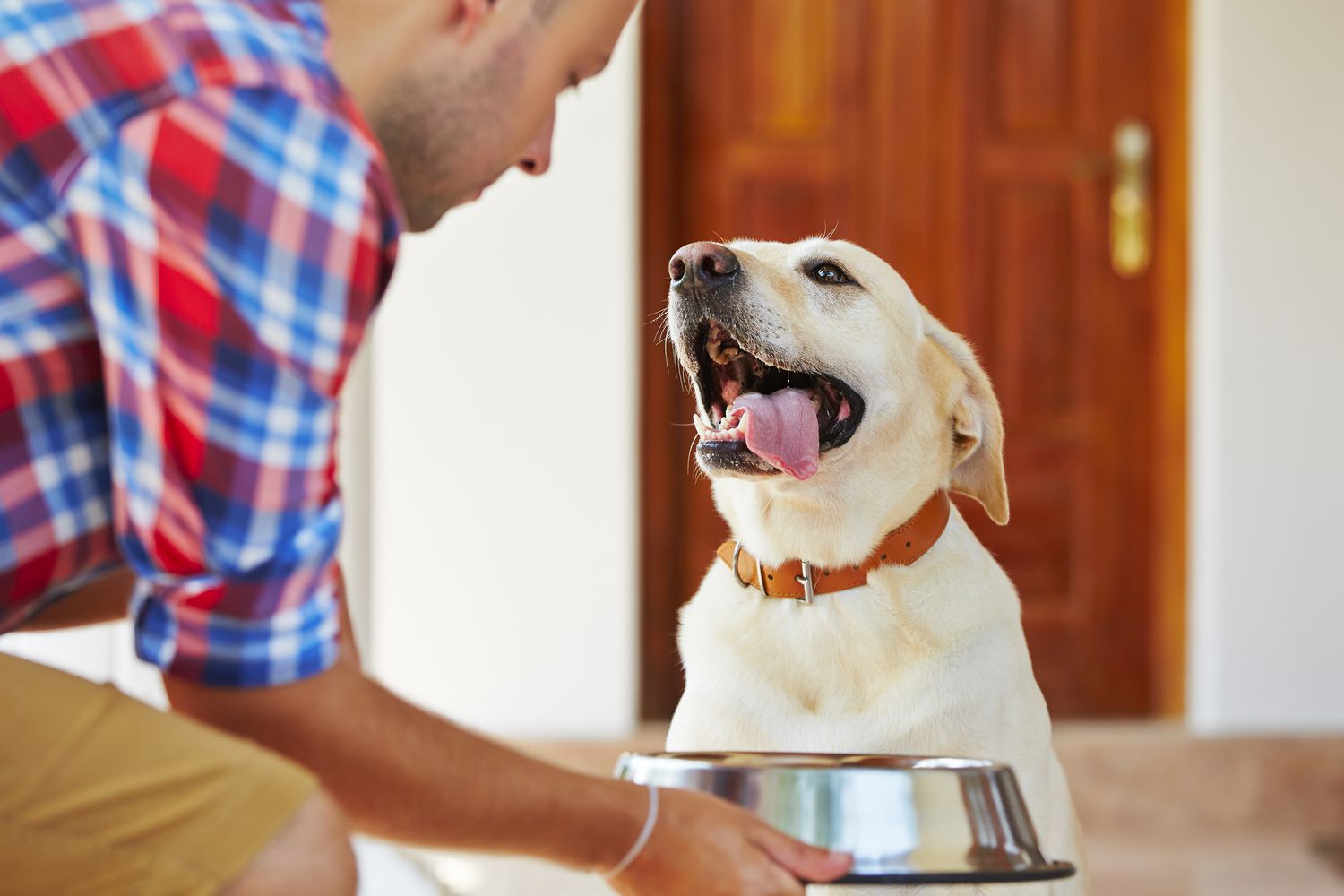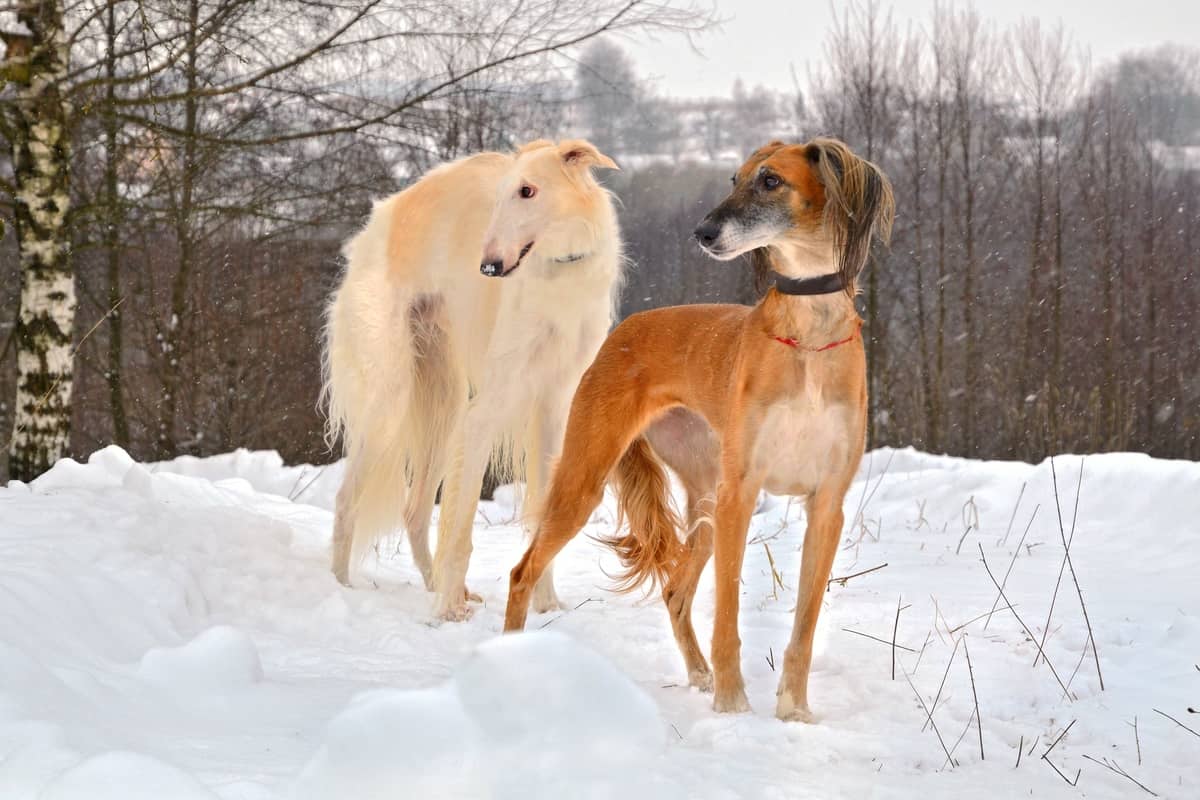
Are you looking for a unique and exotic pet that will turn heads and stand out from the crowd? Look no further than these top 10 most exotic dog breeds. From their striking appearances to their unique personalities, these dogs are sure to make a statement and provide you with a loyal companion for years to come.
Afghan Hound
The Afghan Hound is a truly magnificent breed that stands out for its unique appearance and regal demeanor. Here’s everything you need to know about this exotic and glamorous dog:
Appearance and Characteristics
The Afghan Hound is a large and striking breed that is easily recognized by its long, silky coat and tall, lean physique. They have a narrow head with long, floppy ears, and a long, slender tail that curves at the end. Afghan Hounds come in a range of colors, from cream and white to black and brindle.
History and Origin
The Afghan Hound is an ancient breed that can trace its origins back to the mountains of Afghanistan, where they were used by nomadic tribes for hunting and guarding livestock. They were first introduced to the Western world in the early 1900s, and quickly became popular with royalty and celebrities due to their exotic looks.
Personality and Temperament
Afghan Hounds are known for their independent and aloof nature, but can also be affectionate and loyal with their families. They are not typically recommended for first-time dog owners, as they can be stubborn and difficult to train. However, with patience and consistency, Afghan Hounds can be taught to be well-behaved and obedient.
Grooming and Maintenance
One of the defining features of the Afghan Hound is their long, flowing coat, which requires regular grooming to keep it in top condition. They should be brushed and combed daily to prevent matting and tangling, and will also require periodic baths and trims. Additionally, Afghan Hounds are prone to dental issues and should have their teeth brushed regularly.
Training Tips
Training an Afghan Hound can be a challenge, but it’s important to establish yourself as a strong and consistent leader early on. Positive reinforcement techniques, such as treats and praise, can be effective with this breed, but it’s important to avoid harsh or punitive methods that can lead to distrust and aggression.
The Afghan Hound is a truly stunning breed that is sure to turn heads wherever it goes. While they can be a handful at times, with the right care and training, they can make wonderful companions for those who appreciate their unique beauty and dignified nature.
Basenji
The Basenji is a unique and intelligent breed that stands out for its barkless nature and independent personality. Here’s everything you need to know about this fascinating and lively dog:
Appearance and Characteristics
The Basenji is a medium-sized breed with a short, shiny coat that comes in a range of colors, from black and white to red and tan. They have a distinctive wrinkled forehead and upright ears that give them a curious and alert expression. Basenjis are known for their athletic and muscular build, and can easily outrun most other breeds.
History and Origin
The Basenji is an ancient breed that originated in Africa, where they were used for hunting and as companions by various tribes. They were first introduced to the Western world in the early 1900s, and quickly gained popularity as a unique and exotic pet.
Personality and Temperament
Basenjis are highly intelligent and independent dogs that can be stubborn and headstrong at times. They are known for their curious and playful nature, but can also be aloof with strangers. While they don’t bark like most dogs, they do make a variety of other vocalizations, including yodels and whines.
Grooming and Maintenance
Basenjis have a short, low-maintenance coat that requires minimal grooming. They should be brushed regularly to remove loose hair and keep their coat shiny, but don’t require frequent baths or haircuts. Basenjis are generally healthy and long-lived, but may be prone to certain health issues such as hip dysplasia and eye problems.
Training Tips
Training a Basenji can be a challenge, as they are known for their independent and stubborn nature. Positive reinforcement techniques, such as treats and praise, can be effective with this breed, but it’s important to establish clear boundaries and consistent rules from a young age. Basenjis are also highly active dogs that require plenty of exercise and mental stimulation to prevent boredom and destructive behavior.
The Basenji is a fascinating and lively breed that is sure to keep its owner on their toes. While they can be a handful at times, with the right care and training, they can make wonderful companions for those who appreciate their clever and independent nature.
Azawakh
The Azawakh is a rare and elegant breed known for its slender build, short coat, and regal demeanor. Here’s what you need to know about this striking and unique dog:
Appearance and Characteristics
The Azawakh is a tall and slender breed that resembles a greyhound or a whippet. They have short, fine coats that come in a range of colors, from black and fawn to brindle and white. Azawakhs are known for their long and narrow heads, alert ears, and graceful, athletic build.
History and Origin
The Azawakh is an ancient breed that originated in West Africa, where they were used by nomadic tribes for hunting and as guardians of their herds. They were first imported to Europe and the United States in the 1970s, and have since gained a small but devoted following among dog enthusiasts.
Personality and Temperament
Azawakhs are intelligent and loyal dogs that can be aloof with strangers but deeply devoted to their owners. They are known for their high energy levels and need for daily exercise, as well as their strong prey drive and tendency to chase small animals. Azawakhs are also highly sensitive and may require a patient and gentle approach to training and socialization.
Grooming and Maintenance
Azawakhs have short, easy-to-maintain coats that require minimal grooming. They shed seasonally and may require occasional brushing to remove loose hair. Azawakhs are generally healthy and long-lived, but may be prone to certain health issues such as hip dysplasia and autoimmune disorders.
Training Tips
Training an Azawakh can be a challenge, as they are independent and intelligent dogs with a strong prey drive. Positive reinforcement techniques, such as treats and praise, can be effective with this breed, but it’s important to establish clear boundaries and consistent rules from a young age. Azawakhs also require plenty of exercise and mental stimulation to prevent boredom and destructive behavior.
The Azawakh is a rare and elegant breed that is sure to turn heads with its unique appearance and regal demeanor. While they can be a handful at times, with the right care and training, they can make wonderful companions for active and dedicated pet owners who appreciate their sleek and athletic build.
Chinese Crested
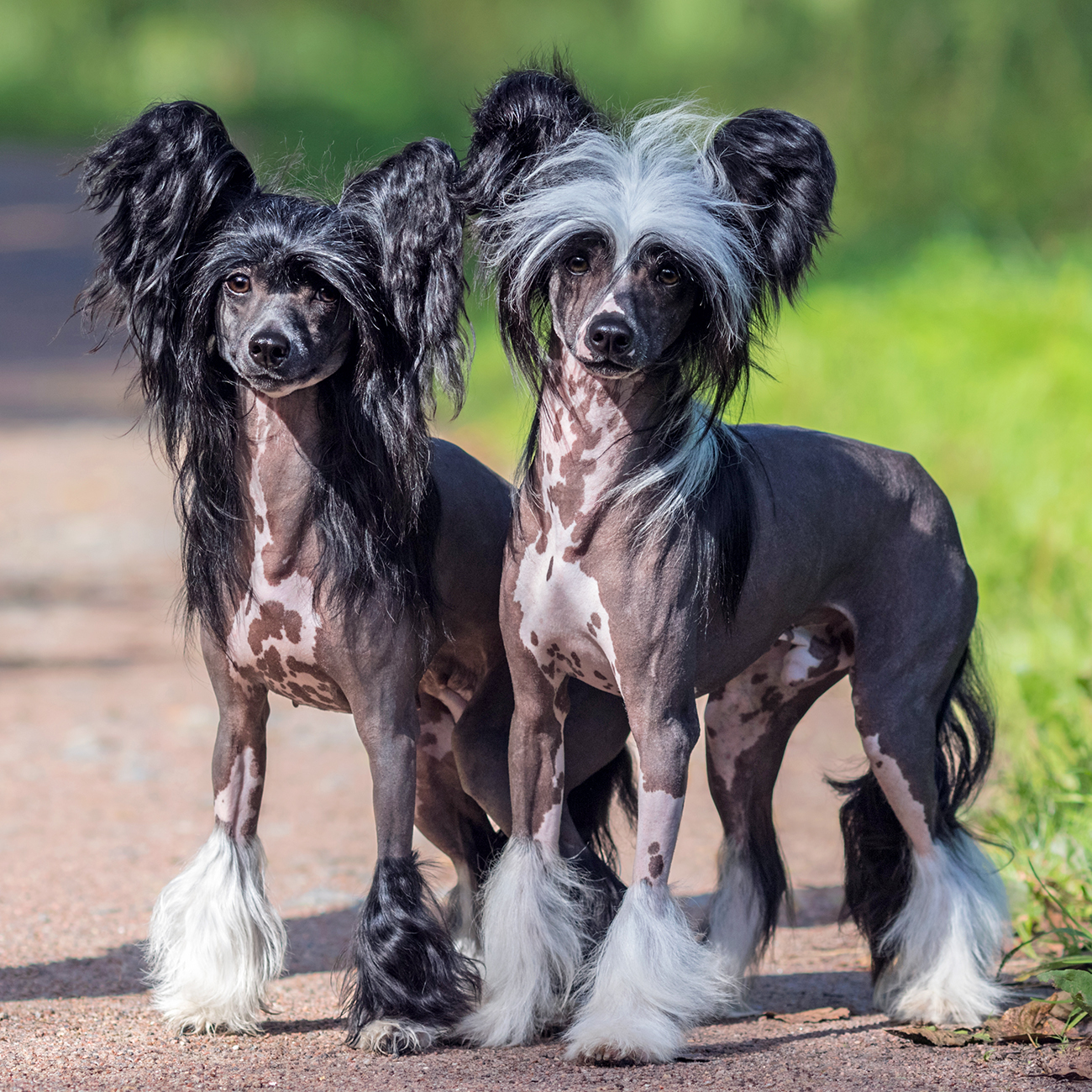
The Chinese Crested is a unique and affectionate breed known for its hairless or powder-puff coat and sweet temperament. Here’s what you need to know about this playful and loving dog:
Appearance and Characteristics
The Chinese Crested comes in two varieties: hairless and powder-puff. The hairless variety has smooth, soft skin and hair on the head, tail, and feet, while the powder-puff variety has a long, silky coat all over the body. Both varieties come in a range of colors, from solid white or black to spotted or speckled.
History and Origin
The Chinese Crested is an ancient breed that originated in China, where they were kept as lapdogs and rat hunters. They were first imported to Europe and the United States in the late 19th century and have since gained popularity as a companion dog.
Personality and Temperament
Chinese Cresteds are affectionate and playful dogs that love to be around their owners. They are known for their gentle and sensitive nature, and may be shy or reserved with strangers. They can also be stubborn and difficult to train at times, but with patience and positive reinforcement, they can learn quickly and make great pets for families with children.
Grooming and Maintenance
The hairless variety of Chinese Crested requires special attention to keep their skin healthy and protected from the sun. They may require regular moisturizing and sunscreen application, as well as bathing to prevent skin irritations. The powder-puff variety requires regular brushing to prevent matting and tangles. Both varieties may require dental care to prevent tooth loss and gum disease.
Training Tips
Training a Chinese Crested can be a challenge, as they can be stubborn and sensitive to harsh discipline. Positive reinforcement techniques, such as treats and praise, can be effective in training this breed, but it’s important to establish clear boundaries and consistent rules from a young age. Chinese Cresteds also require plenty of socialization and exercise to prevent boredom and destructive behavior.
The Chinese Crested is a unique and affectionate breed that is sure to steal your heart with its playful and loving personality. While they may require special attention and care, they can make wonderful companions for loving and patient pet owners who appreciate their distinctive appearance and sweet temperament.
Xoloitzcuintli
The Xoloitzcuintli, or Xolo for short, is a rare and elegant breed that is known for its hairlessness and regal appearance. Here’s what you need to know about this unique and fascinating dog:
Appearance and Characteristics
The Xolo comes in three sizes: toy, miniature, and standard. They can be hairless or coated, with the hairless variety being the most common. The hairless Xolo has smooth, soft skin and a unique appearance that sets it apart from other breeds. The coated Xolo has a short, sleek coat that comes in a variety of colors, including black, gray, and bronze.
History and Origin
The Xolo is an ancient breed that originated in Mexico, where it was revered by the Aztecs as a sacred animal. It was believed to have healing properties and was often used in medicinal ceremonies. The breed nearly went extinct in the 20th century, but has since been revived and is gaining popularity as a companion dog.
Personality and Temperament
The Xolo is a loyal and affectionate breed that bonds closely with its owner. They are intelligent and trainable, but can be stubborn at times. They are generally good with children and other pets, but may be reserved or aloof with strangers. They are also known for their calm and quiet demeanor, making them ideal pets for apartment living.
Grooming and Maintenance
The hairless Xolo requires special attention to keep their skin healthy and protected from the sun. They may require regular moisturizing and sunscreen application, as well as bathing to prevent skin irritations. The coated Xolo requires regular brushing to prevent matting and tangles. Both varieties may require dental care to prevent tooth loss and gum disease.
Training Tips
Training a Xolo requires patience and consistency. Positive reinforcement techniques, such as treats and praise, can be effective in training this breed, but it’s important to establish clear boundaries and consistent rules from a young age. Xolos also require plenty of socialization and exercise to prevent boredom and destructive behavior.
The Xoloitzcuintli is a rare and elegant breed that is sure to turn heads with its unique appearance and regal demeanor. While they may require special attention and care, they can make wonderful companions for discerning pet owners who appreciate their fascinating history and loyal temperament.
Thai Ridgeback
The Thai Ridgeback is a rare and independent breed that is known for its distinct ridged back and fascinating history. Here’s what you need to know about this unique and fascinating dog:
Appearance and Characteristics
The Thai Ridgeback is a medium-sized dog with a muscular build and a short, smooth coat that comes in a variety of colors, including black, blue, and red. Their most distinctive feature is the ridge of hair along their back that grows in the opposite direction of the rest of their coat.
History and Origin
The Thai Ridgeback is an ancient breed that originated in Thailand, where it was used as a guard dog, hunting dog, and companion. The breed nearly went extinct in the 20th century, but was saved by a group of enthusiasts who worked to preserve its bloodlines. The Thai Ridgeback was recognized by the AKC in 1996.
Personality and Temperament
The Thai Ridgeback is an independent and intelligent breed that can be stubborn at times. They are loyal to their owners, but may be reserved or aloof with strangers. They are generally good with children and other pets, but may be aggressive towards other dogs if not socialized properly. They require plenty of exercise and mental stimulation to prevent boredom and destructive behavior.
Grooming and Maintenance
The Thai Ridgeback’s short coat requires minimal grooming, but they do shed moderately and may require occasional brushing. They may be prone to skin allergies and should be kept clean and dry to prevent irritation. They also require regular dental care to prevent tooth decay and gum disease.
Training Tips
Training a Thai Ridgeback requires patience and consistency. Positive reinforcement techniques, such as treats and praise, can be effective in training this breed, but it’s important to establish clear boundaries and consistent rules from a young age. Thai Ridgebacks may be independent and stubborn, but they are also highly intelligent and trainable with the right approach.
The Thai Ridgeback is a rare and fascinating breed that is sure to make an impression with its distinctive appearance and independent personality. While they may require special attention and care, they can make wonderful companions for experienced pet owners who appreciate their unique history and loyal temperament.
Saluki
The Saluki is a majestic and graceful breed that is known for its speed, endurance, and loyalty. Here’s what you need to know about this ancient and regal dog:
Appearance and Characteristics
The Saluki is a tall and slender breed with a long, narrow head and long, silky coat. They come in a variety of colors, including cream, fawn, red, and black. Their most distinctive features are their large, floppy ears and their slim, muscular build.
History and Origin
The Saluki is one of the oldest known breeds of domesticated dog, with a history that can be traced back over 7,000 years. They were originally bred by nomadic tribes in the Middle East as hunting dogs, prized for their speed, agility, and endurance. The Saluki was recognized by the AKC in 1929.
Personality and Temperament
The Saluki is a loyal and affectionate breed that can be reserved or aloof with strangers. They are generally good with children and other pets, but may be aggressive towards small animals, such as cats or rabbits. They require plenty of exercise and mental stimulation to prevent boredom and destructive behavior.
Grooming and Maintenance
The Saluki’s long, silky coat requires regular grooming to prevent matting and tangling. They also shed moderately and may require occasional brushing to keep their coat looking neat and healthy. They are generally healthy and low-maintenance, but may be prone to certain health issues, such as hip dysplasia and eye problems.
Training Tips
Training a Saluki requires patience and consistency. Positive reinforcement techniques, such as treats and praise, can be effective in training this breed, but it’s important to establish clear boundaries and consistent rules from a young age. Salukis may be independent and stubborn, but they are also highly intelligent and trainable with the right approach.
The Saluki is a majestic and graceful breed that has been prized for its speed, agility, and loyalty for thousands of years. While they may require special attention and care, they can make wonderful companions for experienced pet owners who appreciate their ancient history and regal temperament.
Pumi
Are you looking for a playful and energetic dog breed that is also highly intelligent and loyal? Then you might want to consider the Pumi! This medium-sized breed is known for its curly coat, pointed ears, and lively personality. In this article, we’ll explore the characteristics, history, personality, grooming, and training of the Pumi.
Appearance and Characteristics
The Pumi is a medium-sized dog breed that stands between 15 and 18 inches tall at the shoulder and weighs between 18 and 33 pounds. It has a distinctive curly coat that comes in various shades of gray, black, and fawn. The Pumi’s coat is hypoallergenic, which means it sheds very little and is less likely to cause allergic reactions.
One of the most striking features of the Pumi is its pointed ears, which stand erect and are usually covered with hair. The Pumi’s tail is typically docked, which means it is shortened at an early age. The breed has a lively and alert expression, and its body is well-proportioned and muscular.
History and Origin
The Pumi is a herding breed that originated in Hungary. It is believed to have been developed by crossing the Puli with various other breeds, including the German Spitz and the French Poodle. The breed was originally used to herd sheep and other livestock in the Hungarian countryside.
The Pumi was recognized by the American Kennel Club in 2016, making it one of the newest breeds to be recognized by the organization.
Personality and Temperament
The Pumi is a highly intelligent and energetic breed that thrives on human companionship. It is known for its lively and playful personality, and it loves to be around people. The Pumi is also a highly trainable breed, thanks to its intelligence and eagerness to please.
However, the Pumi can be reserved around strangers and may take some time to warm up to new people. It is also a vocal breed that likes to bark, which can be a concern if you live in a noise-sensitive neighborhood.
Grooming and Maintenance
The Pumi’s curly coat requires regular grooming to keep it in good condition. This includes regular brushing to remove any tangles or mats, as well as occasional trimming to keep the coat looking neat and tidy. The Pumi’s ears should be checked regularly and kept clean to prevent ear infections.
The Pumi is an active breed that requires regular exercise and mental stimulation to stay healthy and happy. This can include daily walks, runs, or play sessions, as well as obedience training or other activities that challenge the dog’s mind.
Training Tips
The Pumi is a highly trainable breed that responds well to positive reinforcement training. This includes using treats, praise, and play to reward good behavior and ignoring or redirecting bad behavior.
When training a Pumi, it’s important to keep training sessions short and engaging to prevent boredom and maintain the dog’s attention. Consistency is also key, as the Pumi responds best to a predictable and structured training routine.
In summary, the Pumi is a unique and lively breed that is a great choice for active families who are looking for an intelligent and loyal companion. With proper training and socialization, the Pumi can make a wonderful addition to any household.
Berger Picard
Are you looking for a versatile and loyal working dog that can accompany you on various outdoor activities? Then you might want to consider the Berger Picard, a rare and fascinating breed with a rich history and unique appearance.
Appearance and Characteristics
The Berger Picard, also known as the Picardy Shepherd, is a medium-sized dog breed that typically weighs between 50 and 70 pounds and stands around 21 to 26 inches tall at the shoulder. They have a distinctive rugged and tousled coat, which can come in various shades of fawn, gray, and brindle. Their long, blunt, and expressive face is highlighted by a pair of dark and alert eyes and large, erect ears.
Berger Picards have a sturdy and muscular build that reflects their history as herding and guarding dogs. They are agile and athletic, with a keen sense of smell and hearing that makes them excellent watchdogs and search and rescue dogs.
History and Origin
The Berger Picard has a long and fascinating history that dates back to the medieval times in the Picardy region of France. They were originally bred as versatile working dogs that could herd, guard, and hunt. The breed almost went extinct after World War II, but a group of dedicated breeders managed to revive and preserve it.
Berger Picards made their way to the United States in the 20th century and have since gained a small but devoted following. They are still relatively rare, with only a few hundred registered in the country.
Personality and Temperament
Berger Picards are known for their loyal and affectionate nature, as well as their independent and intelligent personality. They are great with families and children, but can also be reserved with strangers and other dogs. Early socialization and training are essential to ensure that they develop good manners and confidence.
Berger Picards have a strong herding and guarding instinct, which means they need plenty of exercise and mental stimulation. They enjoy long walks, hikes, and playtime in a securely fenced yard. They also excel in dog sports such as obedience, agility, and tracking.
Grooming and Maintenance
Berger Picards have a low-maintenance coat that requires minimal grooming. They only need to be brushed occasionally to remove dead hair and keep their coat clean and shiny. However, they do shed moderately, especially during seasonal changes.
Berger Picards are generally healthy and hardy, with a lifespan of 12 to 14 years. However, they are prone to certain health issues such as hip dysplasia, eye problems, and skin allergies. Regular veterinary checkups and a nutritious diet are essential to keep them healthy and happy.
Training Tips
Berger Picards are highly trainable and eager to please, but can also be stubborn and independent at times. Positive reinforcement training methods that use treats, praise, and play are the most effective with this breed. Harsh or punitive training techniques can cause them to shut down or become aggressive.
Berger Picards excel in obedience, agility, and other dog sports that require focus and teamwork. They also make excellent search and rescue dogs and therapy dogs.
In conclusion, the Berger Picard is a unique and versatile breed that makes a great companion for active and experienced dog owners. Their loyalty, intelligence, and hardworking nature are sure to win your heart and admiration. If you are interested in owning a Berger Picard, be sure to do your research and find a reputable breeder who can provide you with a healthy and well-socialized puppy.
Leonberger
Appearance and Characteristics
The Leonberger is a giant dog breed that is highly recognizable for its thick, long, and shaggy coat, which comes in a range of colors, including brown, red, and cream. They have a distinctive black mask and dark brown eyes. Leonbergers are muscular and have a broad head with floppy ears. Adult males can weigh up to 170 pounds, and females can weigh up to 135 pounds.
History and Origin
The Leonberger breed was created in the mid-19th century by a German breeder named Heinrich Essig. He wanted to develop a breed that resembled a lion, which was the emblem of his hometown, Leonberg. To achieve this, he crossed various dog breeds, including the St. Bernard, Newfoundland, and Great Pyrenees. The Leonberger was originally bred as a working dog for pulling carts, guarding livestock, and serving as a family companion.
Personality and Temperament
Leonbergers are known for their gentle and affectionate nature. They are loyal and protective of their family and are excellent with children. They are intelligent dogs and eager to please, making them easy to train. Leonbergers also have a calm and relaxed demeanor, making them well-suited for families with a more laid-back lifestyle.
Grooming and Maintenance
The Leonberger’s thick coat requires regular grooming to prevent matting and to maintain its luster. Weekly brushing is recommended, with more frequent brushing during shedding seasons. They should be bathed as needed but not too frequently, as over-bathing can strip the coat’s natural oils. Leonbergers also require regular nail trimming and ear cleaning.
Training Tips
Training should start early with Leonbergers to establish a bond between the dog and their owner. They respond well to positive reinforcement and are eager to please their owners. Socialization is also important for Leonbergers, as they can become shy or anxious around strangers if not properly socialized. They excel in obedience training and are also great candidates for therapy dog work.
If you’re looking for an exotic dog breed that is both striking in appearance and gentle in nature, the Leonberger is a great choice. With their majestic appearance and calm temperament, they make excellent family pets and are sure to turn heads wherever they go.
Conclusion
Owning an exotic dog breed can be a rewarding experience for those who want a pet that stands out from the crowd. However, it’s important to do your research and choose a breed that fits your lifestyle and personality. Whether you choose a regal Afghan Hound or a playful Chinese Crested, these dogs are sure to provide you with years of love and companionship.
FAQs:
- Are exotic dog breeds more difficult to train?
- While some exotic dog breeds can be more stubborn or independent than others, proper training and socialization can help ensure that any dog, regardless of breed, is well-behaved and obedient.
- Are exotic dog breeds more expensive than other breeds?
- The cost of an exotic dog breed can vary depending on factors such as the breeder, location, and availability. However, in general, exotic dog breeds can be more expensive than more common breeds.
- Are exotic dog breeds more prone to health problems?
- Like any breed of dog, exotic dog breeds can be prone to certain health issues. However, proper care and regular veterinary check-ups can help prevent or manage any potential health problems.
- Can exotic dog breeds live in apartments?
- Some exotic dog breeds, such as the Chinese Crested or the Pumi, can be suitable for apartment living if they are given enough exercise and mental stimulation. However, larger or more athletic breeds may not be suitable for small living spaces.
- Are exotic dog breeds good with children?
- Like any breed of dog, it’s important to properly socialize and train your pet around children. However, many exotic dog breeds, such as the Basenji or the Thai Ridgeback, can be great companions for families with kids.

